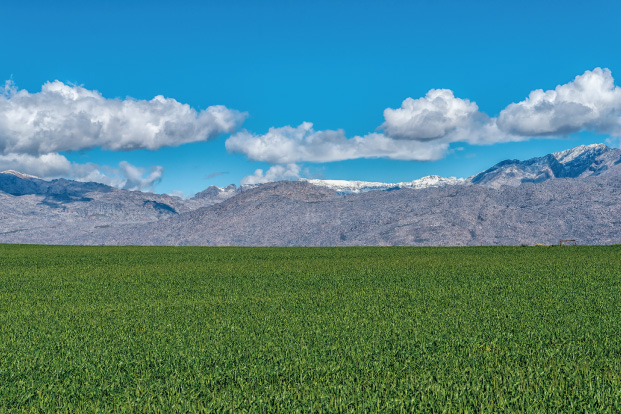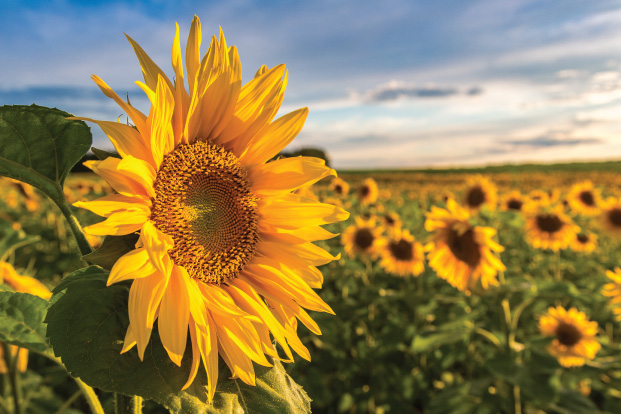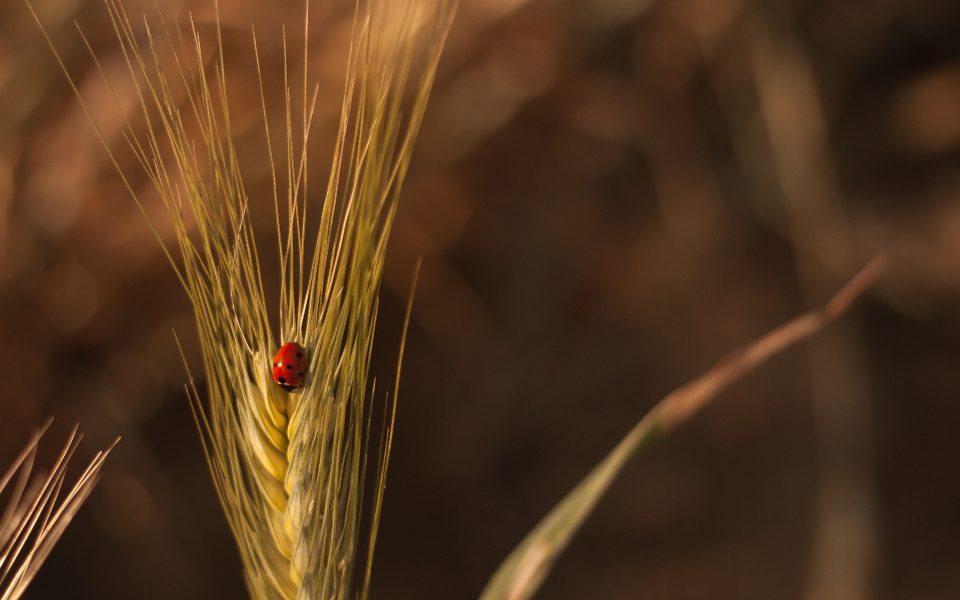How Dohne Merino and medics can boost wheat income
SA water curbs to hit citrus exports
September 23, 2016
Is ‘ugly produce’ a new trend?
October 18, 2016
Market volatility and climatic risks have resulted in an increasing number of grain producers in the Swartland incorporating livestock into their farming systems. Glenneis Kriel talks to Stephen and Peter Steyn to find out how they use sheep and medics to optimise their grain returns.
Grain farmers Peter and Stephen Steyn have been using wheat rotation systems on their farms near Malmesbury in the Swartland since the 1970s.
To make the most of these systems, they incorporate Dohne Merino sheep in their farming operations. The sheep add value to production by using land that is not arable, and by generating income during seasons when wheat is not in production.
Peter and Stephen also farm Sussex and Angus cattle respectively.
As the region is dry and the water brackish, the choice of alternative crops is limited to medics and oats. The brothers therefore use a wheat-medics rotation on good soil, and an oats-medics rotation on the vlei lands and sandier soils.
Medics has numerous benefits as a rotation crop:
- It breaks the monoculture of wheat, thereby disrupting the disease cycle:
- It allows the use of grass herbicides.
- It is a relatively cheap crop to maintain as it needs to be established only once.
- Peter and Stephen have replanted simply to replace older varieties with new.
“Medics can last you a lifetime if you look after it and don’t overgraze it,” Peter explains.
“The newer cultivars have been greatly improved. They produce higher yield and no longer have those sticky burs that tend to get stuck into the sheep’s wool.”
It is a good source of animal feed. “The nutritional value of medics is very similar to that of lucerne, although its protein content is slightly lower,” Stephen says.
Sheep production
Medics starts sprouting only after the first rains in April, and is ready for intensive grazing in August and September (see box). For this reason, the lambing season begins in March, when there is a shortage of grazing. This timing also ensures that lambs are market-ready just before September, when lamb meat prices normally drop.
“If you lose the August market opportunity, you have to wait until December for the next spike,” Stephen explains.
Superovulation and mating periods
The ewes are divided into separate flocks consisting of 100 ewes each, and given high-protein feed for four weeks before, and two weeks after, mating. To produce as many twins as possible, the older ewes’ cycles are synchronised and each ewe receives 3ml pregnant mare serum (PMS) to trigger superovulation.
“In my system, a flock of older ewes is mated every fourteen days from around the first week of October, so there’s a group lambing every second week from the start of March,” Peter explains.
The young ewes are placed with teaser rams when they are eleven months old to stimulate ovulation before being placed with the rams, and are managed to lamb from late May.
Managing flock size
Currently, Stephen has 850 ewes and 350 young ewes, while Peter has 750 ewes and 200 young ewes. Peter explains that flock size is determined by the volume of medics baled the previous year, and the following year’s outlook. In 2015, the region suffered one of its driest years in history, and predictions remain poor for this year. Because of this, the Steyns have downscaled production, with Peter halving his cattle herd.
Feed and nutrition
In January, the ewes are scanned and evaluated by a veterinarian. Multiple-bearing ewes receive additional feed from six weeks before lambing, while ewes that failed to conceive are culled.
Stephen stresses that ewes must receive a well-balanced, high-protein diet from at least four weeks before lambing.
“We feed our ewes flat-out during this time until the month after they’ve lambed to ensure they have enough milk and regain body condition quickly. It also helps to push the lambs’ birth weights up to about 4kg.”
Feed content
Ewes and lambs receive high protein (15%) rations, designed by well-known feed specialist, Dr Jasper Coetzee. Ideally, a ewe should consume about 3% of its body weight in feed.
Medics is the foundation of the ration and the primary roughage source. Hay, wheat screenings, oats, lupines and soya oil cake comprise the remaining ingredients. Protein is added to the ration in the form of fishmeal, soya bean meal or cottonseed cake. The form selected is determined by the feeding value and price.
Lime is included as it is rich in calcium and balances the calcium/phosphorus ratio. The feed is then mixed with molasses to enhance palatability.
Little attention is given to ewes producing singles.
“They need to look after themselves and only receive about half the recommended supplements,” Stephen explains.
He emphasises that he and Peter specifically select for multiples and high fertility when choosing rams and replacement ewes.
Lambing
On Peter’s farm, lambing takes place in 1,5m x 1,8m cubicles in a shed in order to reduce mortalities. Only multiple-bearing ewes are kept in pens under cover. Two weeks after lambing, the ewes and their lambs are moved to camps. On Stephen’s farm, lambing occurs outside.
Gestating ewes are ‘wet and dried’ at the tail docking station. The process involves checking if there is milk on their udders.
“No milk means that they have either lost their lambs, suffered a miscarriage, or reabsorbed their foetuses. These ewes are culled,” Peter says.
Weaning and the market
From 10 days after birth, lambs receive creep feed, which takes some pressure off the ewes. To enable weaning at 40kg (100 days old), lambs receive high-protein diets.
At six weeks, young rams are tail-docked and receive elastrator rings around the bases of their scrotums. Peter explains that this type of castration improves weight gain, as the rams continue to produce high levels of testosterone.
However, rams have to be removed from ewes when they reach 40kg to prevent unplanned breeding. Lambs are weaned as they are sent to the market.
“We use this approach as lambs usually lose weight when they’re weaned,” Stephen says. “So to reduce stress, we put the lambs on a scale and class them according to bodyweight. Those that weigh more than 40kg are taken away from their mothers and sent to the market the next day.”
Stephen works on a feeding budget of R350/lamb for bought-in feed, and aims to sell his lambs for at least R1 400 each.



